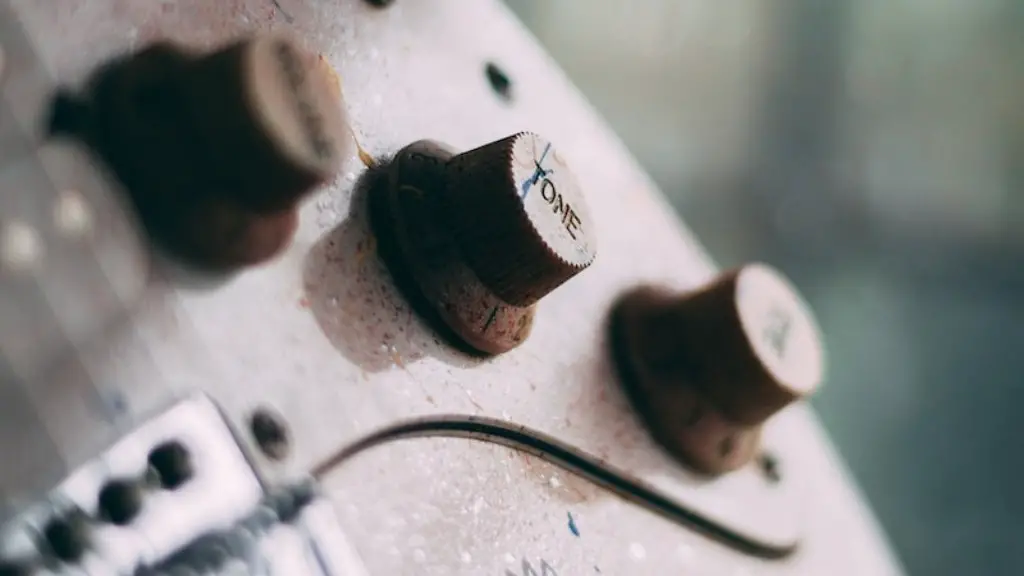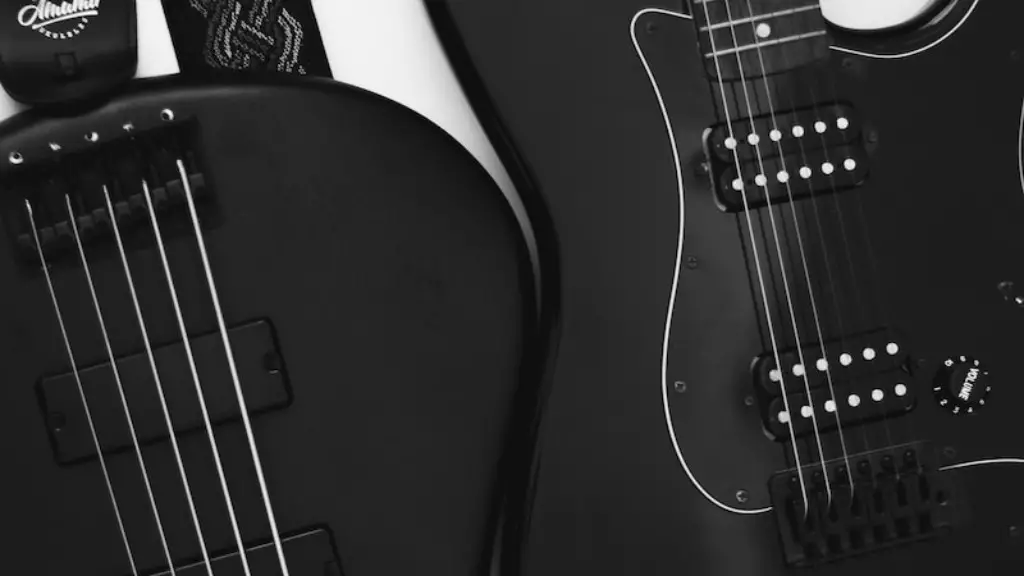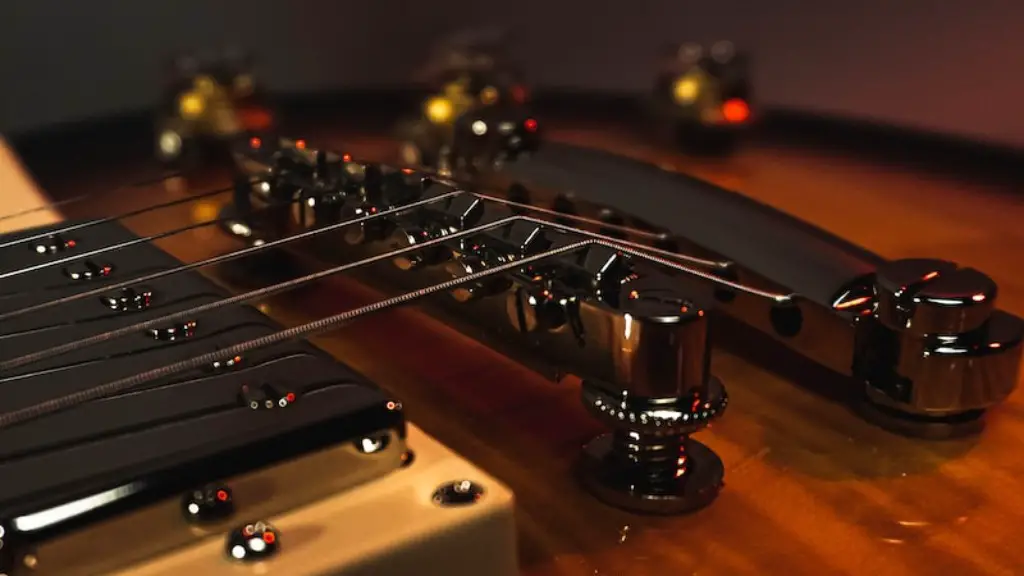Playing an electric guitar with the correct intonation is essential in producing the best sound. Setting the intonation on an electric guitar can be a tricky task, but it’s important to get it right.
Intonation refers to the accuracy of the notes produced by each string. If your guitar is out of tune, it’s likely that the intonation will be off as well. In this guide, we’ll show you how to set the intonation on an electric guitar correctly.
The first step is to check that your guitar is in tune. This can be done with a tuner or by using a reference note from another instrument. Once your guitar is in tune, you’ll need to adjust each string individually until it matches the reference note. This process is known as intonating your guitar and can take some time and patience.
Once you’ve adjusted each string, you should check that all of them are in tune again and make any necessary adjustments. With some practice and patience, you’ll soon have your electric guitar playing perfectly in tune!
Checking and Setting Intonation on Electric Guitar
Intonation is an essential element of playing guitar. It should be checked and adjusted on a regular basis to ensure that your sound is consistent and accurate. An electric guitar’s intonation can be adjusted by adjusting the bridge saddles, which are the screws at the back of the bridge. Adjusting these saddles can be done by first loosening the strings, then moving each saddle forward or backward to change its placement on the string.
When adjusting intonation, it’s important to keep in mind that each string should have its own individual adjustment. This means that if one string sounds out of tune, you should focus on adjusting only that one string until it sounds correct before moving onto the next. To check intonation after making adjustments, use a tuner and play each string individually to make sure it plays in tune all the way up the fretboard. If you find that some notes are sharp or flat compared to others, you’ll need to adjust the saddles again.
Once you have set your intonation correctly, it’s important to regularly check it and make adjustments as needed in order for your guitar to stay in tune. This is especially true if you’re playing live or recording in a studio setting as even small changes in intonation can affect your overall sound quality significantly. By taking a few minutes every now and then to adjust your intonation
Adjusting the Bridge Saddles on an Electric Guitar
Adjusting the bridge saddles of an electric guitar is an important part of setting the intonation. Intonation is the accuracy with which a note is reproduced or sustained, and it needs to be set correctly for your guitar to sound in tune. To adjust the bridge saddles, start by loosening the screws that hold them in place. Then use a Phillips screwdriver to adjust their position, making sure that each saddle is parallel to the others. Once you have adjusted each saddle, you can then use a tuner to check the intonation of each string. Carefully adjust the bridge saddles until all strings are in tune.
If your guitar still sounds out of tune after adjusting the bridge saddles, it may be due to a problem with your nut or frets. In this case, it’s best to take your guitar to a qualified technician for repair and adjustment. Taking care of your electric guitar will help ensure years of reliable performance and great sound!
Adjusting String Lengths to Set Intonation on Electric Guitar
Intonation is the process of setting the guitar so that it plays in tune all the way up and down the neck. This can be a tricky process, but with a few simple steps, you can make sure that your electric guitar is playing in tune. First, use an electronic tuner to make sure all of your strings are tuned correctly. Once the strings are tuned, check for fret buzz and adjust any problem areas. Next, adjust each string’s length until it is in tune at both the twelfth fret and open string. To do this, loosen the string’s tuning peg and press down gently on the string behind the nut at the headstock. Move it up or down slightly until it is in tune, and then secure it by tightening the tuning peg again. Finally, repeat this process for each string until all strings are in tune at both points. By taking your time and following these steps carefully, you can ensure that your electric guitar is perfectly intonated.
Setting Intonation on Electric Guitar
Intonation is one of the most important aspects of guitar setup, and it is essential for getting a great sound out of your instrument. The intonation of an electric guitar refers to how well the strings are in tune with one another, and it can be adjusted by adjusting the bridge saddles of the guitar. To set intonation, start by tuning your guitar to standard EADGBE tuning. Then, play the 12th fret harmonic on each string and compare it with the fretted note at the same fret. If they are out of tune, adjust the saddle of that string until they match. Once you have set all six strings, play open chords and check that all notes are in tune.
It’s also important to check that your strings are properly stretched before setting intonation – if they haven’t been stretched yet, you may need to go back and adjust after playing for a few minutes. Once you have everything set up correctly and you’re happy with your intonation, make sure to check it regularly – a change in temperature or humidity can affect intonation over time. With proper setup and regular maintenance, you’ll never have to worry about out-of-tune notes again!
Setting Intonation on Electric Guitar
Intonation is an important part of a guitar’s setup, ensuring that notes are properly tuned up and down the neck. To set intonation on an electric guitar, you’ll need a few basic tools: an electronic tuner, a Phillips screwdriver, and a feeler gauge. With these items, you can adjust the bridge saddles and ensure that each string is perfectly in tune.
First, attach your electronic tuner to the guitar’s tuning pegs. Play each string one at a time until you hear it sound clearly in tune. On an electric guitar, it’s important to check intonation from the 12th fret as well as open strings. When playing the 12th fret note, it should match exactly with what your tuner reads for the open string note.
Next, use your Phillips screwdriver to adjust the bridge saddle screws for each string. Move them either closer or further away from the nut until the 12th fret note matches what the tuner reads for that same string open. Finally, use a feeler gauge to make sure that each saddle is positioned at exactly the same distance from its corresponding nut slot – this will help maintain even intonation across all strings. Once everything is in place, you’re ready to rock!
Setting Intonation on Electric Guitar
Intonation is an essential element of playing the guitar, and setting it correctly can make all the difference in how your instrument sounds. When intonation is off, chords will sound out of tune and notes will be off-key. To get your intonation just right, here are some tips:
First, use a tuner to ensure that each string is in tune. This will help you detect any discrepancies between the notes produced by each string. Check the 12th fret harmonic against the fretted note. If they are out of tune, then you need to adjust the intonation.
Next, find the saddle for each string on the bridge and loosen its screws to move it back or forward. Make small adjustments until the 12th fret harmonic matches the fretted note perfectly.
Finally, check each string again with a tuner to make sure they are all in tune with one another. With this simple process, you can easily set your guitar’s intonation and enjoy playing without worrying about notes being out of tune.
To Sum it All Up
Setting intonation on an electric guitar may seem like a daunting task, but with the right tools and a little patience, you can do it yourself. It starts with loosening the strings, adjusting the bridge saddles, and using an electronic tuner to find the correct note. After that, it’s a matter of making small adjustments to ensure that the notes are in tune all along the fretboard. With some practice, you can easily master this skill and keep your instrument sounding its best. By following these steps and repeating them periodically, you’ll ensure that your electric guitar always sounds great.





